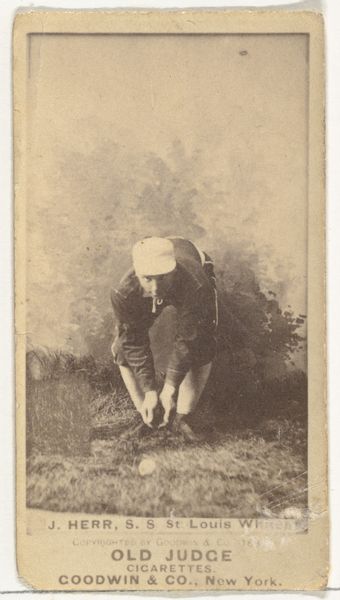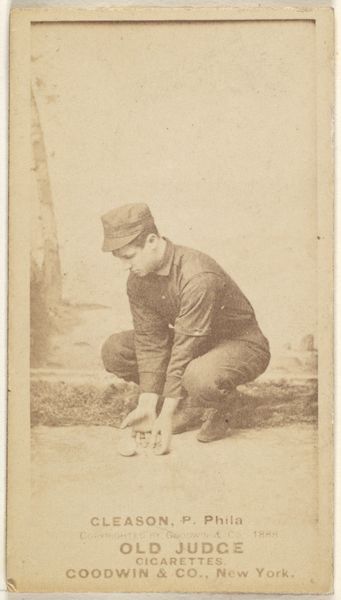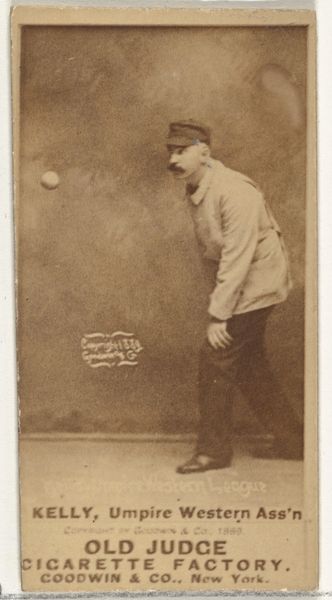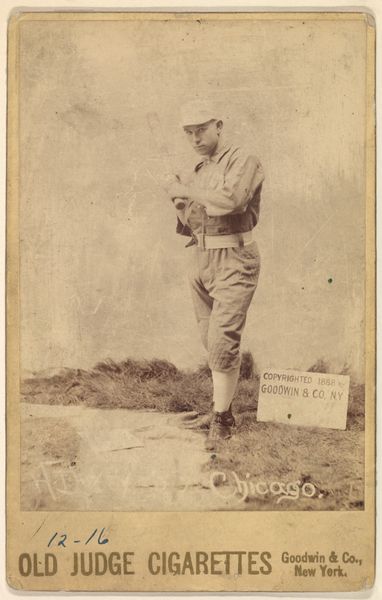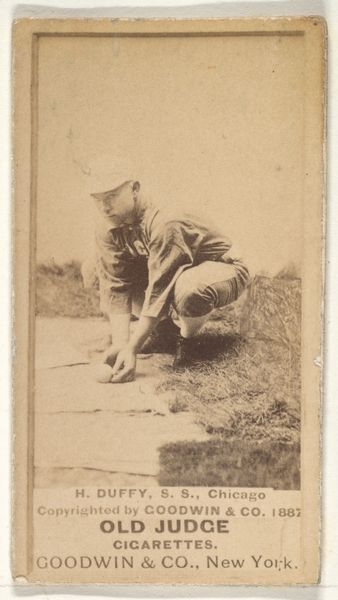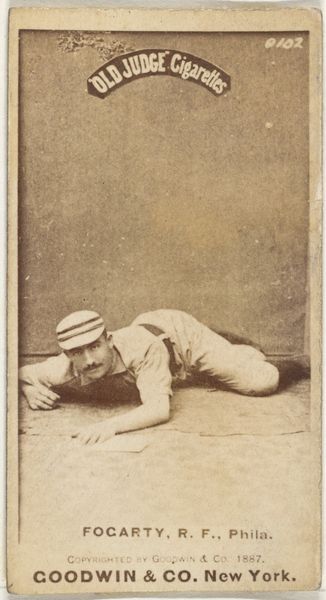
Jacob Peter "Eagle Eye" Beckley, 1st Base, Pittsburgh, from the Old Judge series (N172) for Old Judge Cigarettes 1888
0:00
0:00
print, photography, gelatin-silver-print
#
portrait
# print
#
baseball
#
photography
#
gelatin-silver-print
#
genre-painting
#
realism
Dimensions: sheet: 2 11/16 x 1 3/8 in. (6.9 x 3.5 cm)
Copyright: Public Domain
Curator: The focus of our attention is an 1888 gelatin silver print produced by Goodwin & Company as part of their "Old Judge" series. The piece captures Jacob Peter "Eagle Eye" Beckley, the first baseman for the Pittsburgh baseball team. Editor: Immediately striking is the sepia tone – it casts this image in such an antique light, reinforcing that this is a historical artifact and also emphasizing the material conditions through which it exists. Curator: The photograph was originally part of a baseball card inserted into cigarette packs to promote Old Judge Cigarettes. Consider the means of production. The image of Beckley, itself an artifact of sport, is also an advertisement meant to sell tobacco, a product fraught with complex socioeconomic and political dimensions then, as now. Editor: Absolutely. This image enters the sphere of capitalist consumption as baseball's rise intertwined with branding and advertisement, often promoting harmful products such as these cigarettes. We should examine this not merely as a celebration of sport, but rather how identities—a sports figure in this instance—are shaped by market forces within a specific historical context. Who has access and power here and for what purposes? Curator: Precisely, let's explore further, and turn to materiality itself. Think about the craftsmanship: the gelatin silver printing process, a fairly new technology for mass-producing images on a small, portable format—almost like a miniature piece of fine art slipped into each cigarette pack. Note how it connects craft, photography and sport culture. Editor: This ties into gender and race dynamics, too. These trading cards romanticize sports, particularly to male audiences while sidestepping many concerns surrounding labor conditions. Similarly, consider how representations in media reinforce race ideologies – something pertinent for its era – where certain images might perpetuate racist stereotypes. The baseball hero is constructed, carefully, often at the exclusion or cost of many other narratives. Curator: That's crucial; there’s always an exclusion happening in these selections of representation. Yet focusing also on production processes reminds us of labor, a thing easily forgotten. What makes this a compelling historical artifact? Its fusion of commercial intent and early sports media utilizing photographic printing technologies. Editor: Thinking intersectionally then— sport, tobacco industry, early photography, race representation and labor conditions all come into focus to re-frame what we’re seeing. It becomes about critical analysis than blind reverence to a sporting figure of a bygone era. Curator: So in this intersection we can recognize the piece for how it uses its materials toward capitalist gain through manufacturing desires associated both with idealized athletic talent AND an addictive substance, all made photographically accessible. Editor: I concur – in dissecting all its dimensions we achieve enriched insights far exceeding initial surface observations!
Comments
No comments
Be the first to comment and join the conversation on the ultimate creative platform.
